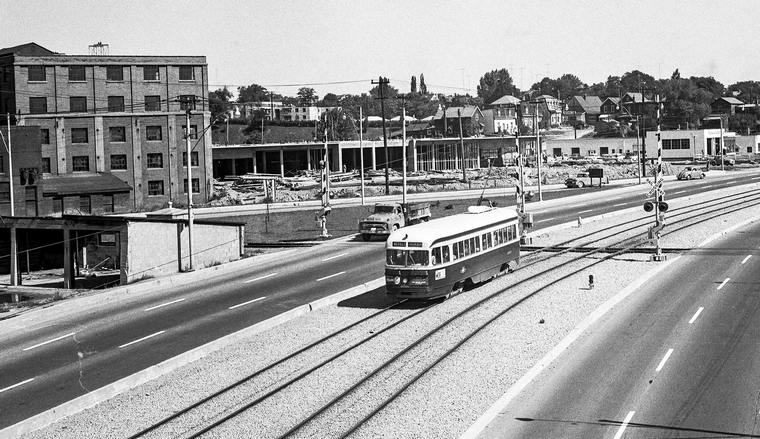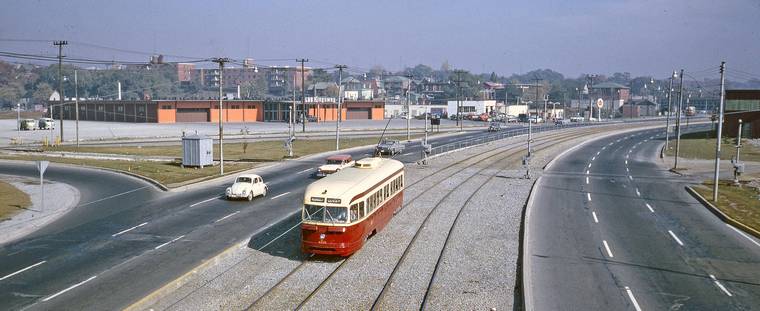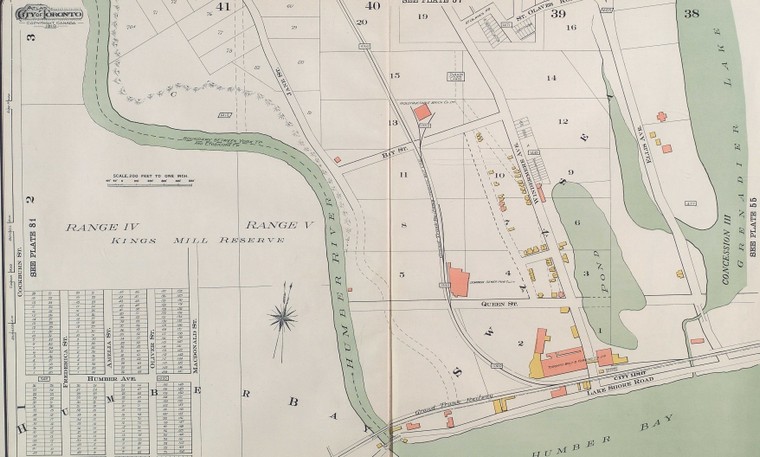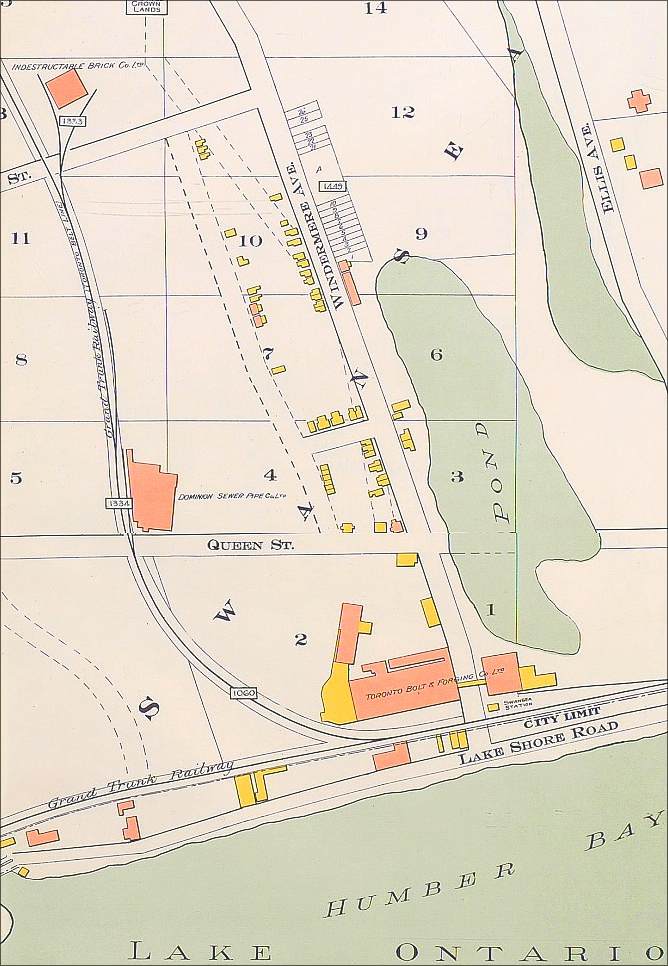|
|
|
You are using an out of date browser. It may not display this or other websites correctly.
You should upgrade or use an alternative browser.
You should upgrade or use an alternative browser.
- Thread starter wolfewood
- Start date
Towered
Superstar
Why wasn't this work done in anticipation of the arrival of the new streetcars, oh, a decade ago?
W. K. Lis
Superstar
Why wasn't this work done in anticipation of the arrival of the new streetcars, oh, a decade ago?
Same excuse as always. Underfunding of public transit by the automobile-addicted politicians.
DSCToronto
Superstar
In this case I think one has to say it was TTC incompetence. The original plan was that only first 60 new streetcars would even have poles. By delaying they made it essential that all cars have both poles (which will sooner or later be unusable) and pantos (which one day will be essential) and by 'organising' the work the way they did, they did not even make it possible for major routes with many streetcars like King to use pantos, even today!Same excuse as always. Underfunding of public transit by the automobile-addicted politicians.
W. K. Lis
Superstar
In this case I think one has to say it was TTC incompetence. The original plan was that only first 60 new streetcars would even have poles. By delaying they made it essential that all cars have both poles (which will sooner or later be unusable) and pantos (which one day will be essential) and by 'organising' the work the way they did, they did not even make it possible for major routes with many streetcars like King to use pantos, even today!
Actually, it is because of budget cuts forced on the TTC by the higher-ups. Something has to be cut, and the streetcar network has been the lowest priority for decades. The same reason why the streetcars have to "stop" at each and every track switch for "safety" because there are no funds to fix them property.
DSCToronto
Superstar
Though I certainly agree that some of the blame should be placed on politicians, I think TTC management deserve quite a bit too. Their scheduling of the overhead replacement was 'haphazard" at best and I saw no sign of them ever reporting to their Board that by not completing overhead conversion faster they would end up paying for both pantographs and poles on all cars. In addition, their pole replacement program was handled in what I think was a wasteful way - they did not do a whole area or street at one time but did most of them and then had to return (sometimes several times) to do the rest.Actually, it is because of budget cuts forced on the TTC by the higher-ups. Something has to be cut, and the streetcar network has been the lowest priority for decades. The same reason why the streetcars have to "stop" at each and every track switch for "safety" because there are no funds to fix them property.
EastYorkTTCFan
Senior Member
I don't get this whole thing about the switches being broken because they have to stop and check them at everyone. It has nothing to do with the switch not function it's because they don't have any sort of signal to the streetcar driver that the switch is set t way. Unfortunately, unlike the modern system where is a light to tell the driver how the switch is set the legacy network in Toronto hasn't been updated mainly due to lack of the complete disinterest in the city council in allowing it to be done.The same reason why the streetcars have to "stop" at each and every track switch for "safety" because there are no funds to fix them property.
DSCToronto
Superstar
At least the tender calls are getting out


| Notice of Intended Procurement | Solicitation number: | Doc2310822841 (84-2020) | |
| Commodity: | Construction Services, Construction Services | ||
| Description: | TTC Track Allowance Reconstruction, Platform Construction and Traffic Signal Work TTC track allowance Reconstruction, Platform Construction, Traffic Signal work and Road/Sidewalk work at Howard Park Ave including Parkside Dr. & Dundas St. Intersections and High Park Loop |
drum118
Superstar
What good is it putting 505 streetcars back into service before this work is done??? It also mean 506 cars will be replace with buses also.
Got to thank the traffic department for not allowing signals to work correctly for TTC in place as required.
It also time TTC go after the bar signal system for the whole system even getting MTO to change the rules for it. Europe and the US allows them, as well KW.
Makes no different if switches are working correctly or not, drivers have to stop to make sure the points are in the right positions. Also, only one car is to cross the intersection even with another car following it or coming in the opposite direction.I don't get this whole thing about the switches being broken because they have to stop and check them at everyone. It has nothing to do with the switch not function it's because they don't have any sort of signal to the streetcar driver that the switch is set t way. Unfortunately, unlike the modern system where is a light to tell the driver how the switch is set the legacy network in Toronto hasn't been updated mainly due to lack of the complete disinterest in the city council in allowing it to be done.
Got to thank the traffic department for not allowing signals to work correctly for TTC in place as required.
It also time TTC go after the bar signal system for the whole system even getting MTO to change the rules for it. Europe and the US allows them, as well KW.
Last edited:
W. K. Lis
Superstar
Found this of interest concerning the Queen Street extension (now named The Queensway). From link.
"4000 westbound along Queen Street extension just having crossed the diamond with CNR spur once part of the Toronto Belt Line Humber loop. Note Club Kingsway under construction."
September 1958.

"4195 in same place although CNR track has been removed. Club Kingsway at left behind streetcar. Far right distant background is TTC Runnymede route bus at Windermere Ave. south end of route."


"This portion of the old Belt Line remained in use by CNR long after the track north of the brick yard was dismantled. It included two diamonds with the TTC streetcar tracks in a separate right-of-way along the Queen Street extension."

"4000 westbound along Queen Street extension just having crossed the diamond with CNR spur once part of the Toronto Belt Line Humber loop. Note Club Kingsway under construction."
September 1958.

"4195 in same place although CNR track has been removed. Club Kingsway at left behind streetcar. Far right distant background is TTC Runnymede route bus at Windermere Ave. south end of route."


"This portion of the old Belt Line remained in use by CNR long after the track north of the brick yard was dismantled. It included two diamonds with the TTC streetcar tracks in a separate right-of-way along the Queen Street extension."

lenaitch
Senior Member
I always wondered if there were any instances of TTC rail crossing commercial railways. I assume there was there some method of electrical isolation.
micheal_can
Senior Member
I always wondered if there were any instances of TTC rail crossing commercial railways. I assume there was there some method of electrical isolation.
I imagine the wires were high enough that the trains would clear them. Not likely possible now with double stack and bilevel cars.
AlbertHWagstaff
Senior Member
Those rails were still in the roadway on the Queensway when it was taken up for road rebuilding in the not so distant past.
in ancient times there was a streetcar-rail crossing on Danforth east of Main St., which was just a single track spur, a crossing on Front St. west of Simcoe, Queen & DeGrassi, and in less prehistoric times there was the crossing on Davenport just west of Lansdowne. That one lasted until 1957.
Someone here may have more info on whether isolation would have been in place and how it was accomplished.
in ancient times there was a streetcar-rail crossing on Danforth east of Main St., which was just a single track spur, a crossing on Front St. west of Simcoe, Queen & DeGrassi, and in less prehistoric times there was the crossing on Davenport just west of Lansdowne. That one lasted until 1957.
Someone here may have more info on whether isolation would have been in place and how it was accomplished.
DSCToronto
Superstar
Not sure one can blame the Council. It is TTC Management who suggest/insist on things that should/must be done and it's up to the TTC Board to ask questions. (Yes, the Board is mostly Councillors but...)I don't get this whole thing about the switches being broken because they have to stop and check them at everyone. It has nothing to do with the switch not function it's because they don't have any sort of signal to the streetcar driver that the switch is set t way. Unfortunately, unlike the modern system where is a light to tell the driver how the switch is set the legacy network in Toronto hasn't been updated mainly due to lack of the complete disinterest in the city council in allowing it to be done.
felix123
Active Member
Really hoping that when the pandemic is over, the 511 is extended to St. Clair West station to celebrate my efforts of staying inside all day every day for the past month. It's the least the TTC could do for me and it would really improve my commute.




